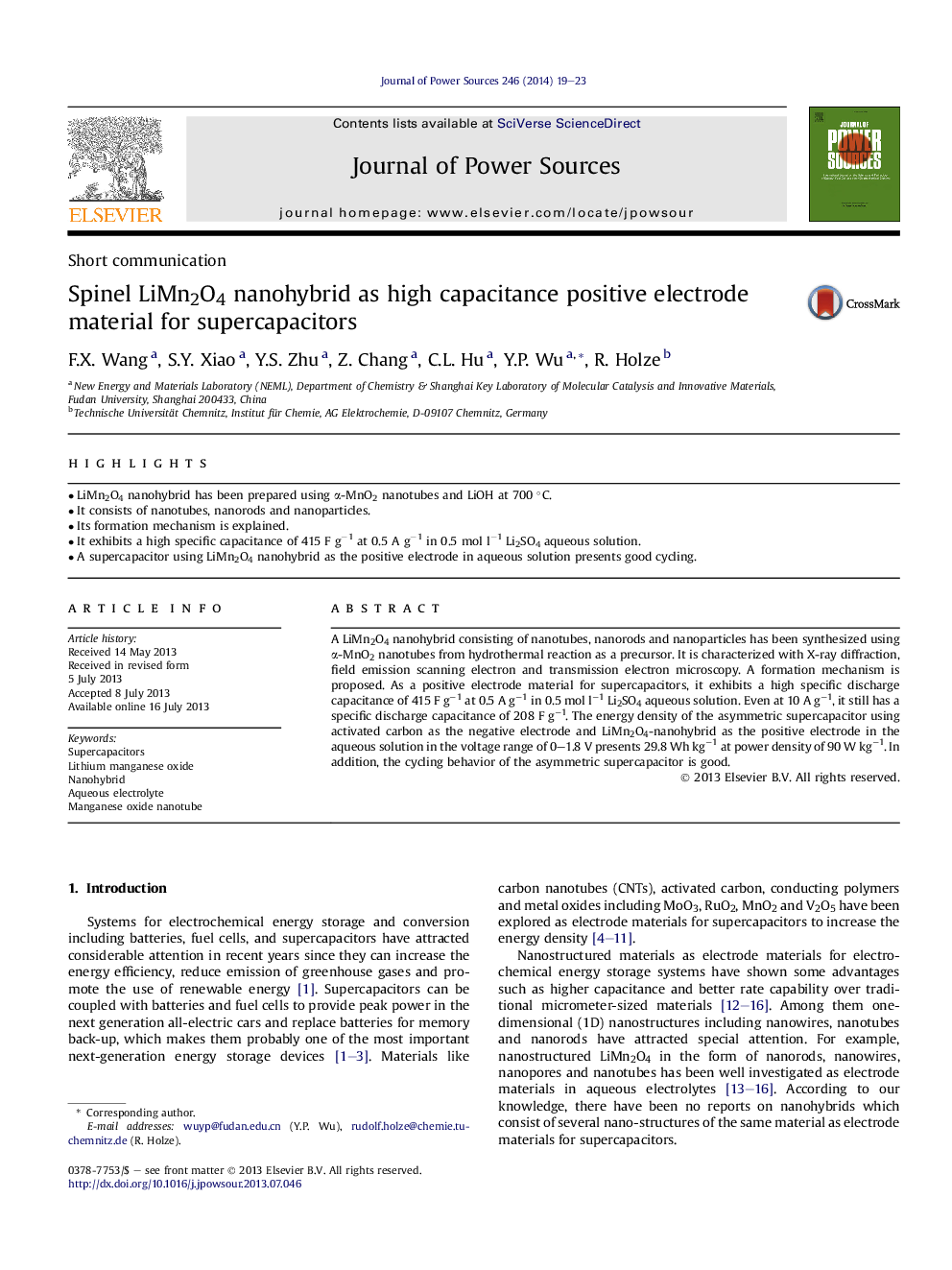| کد مقاله | کد نشریه | سال انتشار | مقاله انگلیسی | نسخه تمام متن |
|---|---|---|---|---|
| 1284331 | 1497986 | 2014 | 5 صفحه PDF | دانلود رایگان |

• LiMn2O4 nanohybrid has been prepared using α-MnO2 nanotubes and LiOH at 700 °C.
• It consists of nanotubes, nanorods and nanoparticles.
• Its formation mechanism is explained.
• It exhibits a high specific capacitance of 415 F g−1 at 0.5 A g−1 in 0.5 mol l−1 Li2SO4 aqueous solution.
• A supercapacitor using LiMn2O4 nanohybrid as the positive electrode in aqueous solution presents good cycling.
A LiMn2O4 nanohybrid consisting of nanotubes, nanorods and nanoparticles has been synthesized using α-MnO2 nanotubes from hydrothermal reaction as a precursor. It is characterized with X-ray diffraction, field emission scanning electron and transmission electron microscopy. A formation mechanism is proposed. As a positive electrode material for supercapacitors, it exhibits a high specific discharge capacitance of 415 F g−1 at 0.5 A g−1 in 0.5 mol l−1 Li2SO4 aqueous solution. Even at 10 A g−1, it still has a specific discharge capacitance of 208 F g−1. The energy density of the asymmetric supercapacitor using activated carbon as the negative electrode and LiMn2O4-nanohybrid as the positive electrode in the aqueous solution in the voltage range of 0–1.8 V presents 29.8 Wh kg−1 at power density of 90 W kg−1. In addition, the cycling behavior of the asymmetric supercapacitor is good.
Journal: Journal of Power Sources - Volume 246, 15 January 2014, Pages 19–23